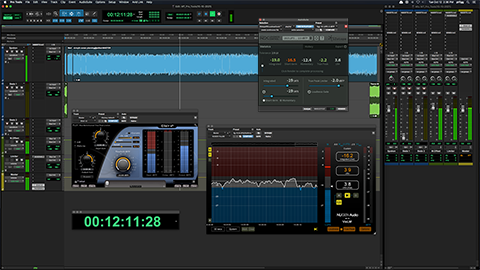Are you producing a Podcast and hosting it on your website? Your website is essentially a proprietary distribution platform. Sound familiar? Maybe similar in concept to a broadcast network?
Regarding vague perspectives in relation to whether the “Target Loudness” post production mindset is relevant, or not … hear me out.
Broadcast networks specify audio submission Integrated Loudness targets which include tolerance margins. If an audio submission does not meet the specified requirement(s) – the work is rejected.
In essence networks expect the submitter to properly (let’s say) manipulate prepared works in order to meet requirements prior to submission.
Conversely most music streaming services handle this so called manipulation internally using proprietary methods. They apply perceptual loudness manipulation across submissions in order to establish playback consistency.
For example if -14.0 LUFS is the recognized distribution Integrated Loudness for an arbitrary music streaming service and your mastered music submission checks in at -10 LUFS … the service will subtract 4 LU of gain.
Note if the above scenario is reversed I’m not entirely sure if adding gain is now commonplace. I’ve heard this practice is not widespread. However I do believe select streaming services add gain (and possibly limiting) if necessary.
BTW Loudness Normalization in concept is nothing more than adding/subtracting gain in order to meet a specified target. If added gain causes spec. defined True Peak overshoots – limiting may be applied.
Music Submissions
Many music mastering engineers recommend producers simply ignore the loudness target concept. They widely suggest mastering for optimum fidelity and present streaming services with a well produced product that may be efficiently manipulated according to the service’s requirements. All good.
Podcasts
I don’t have access to valid data specifying whether ubiquitous streaming services currently manipulate spoken word Podcasts using the same methods applied to music submissions. I’ll look into it.
* * *
Back to hosting your Podcast on your personal website, or in essence – your platform …
Efficient website accessibility for your Podcast is an essential requirement. My guess is your implemented site player does not manipulate the attributes of your embedded files in order to standardize distribution Integrated Loudness across your hosted catalogue. And I doubt independent producers at large hire coders to build server side audio processing engines to establish what I previously described.
Remember, you – the site owner, producer, whatever – bear the responsibility to serve your listeners with let’s call it optimized audio that is perceptually consistent across all of your hosted programs. Your target may be subjective or it may adhere to published best practices. Again, all good.
Point is – without a recognized Integrated Loudness target including acceptable tolerance margins (and an ultimate True Peak ceiling) – any standardization concept would be near impossible to efficiently implement.
How to Do It
You can certainly attempt to “mix” your programs in RT using a loudness meter thus adhering to various descriptors. However final stage off-line target processing is much more efficient.
Of course the quality of your intermediate and/or pre-master prior to Loudness Normalization will dictate final fidelity and speech intelligibility of the processed output.
Bottom Line
Let’s not marginalize the significance of target based audio processing and Loudness Normalization with full True Peak compliance. The general concept works for proprietary broadcast platforms and it is certainly applicable for your personal website where you host your spoken word Podcast.
-paul.
